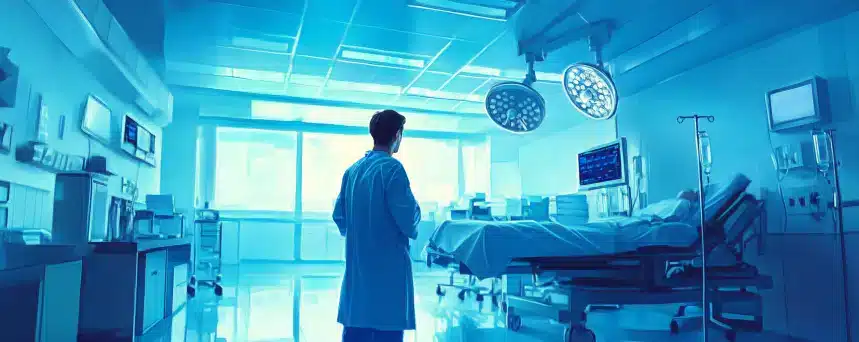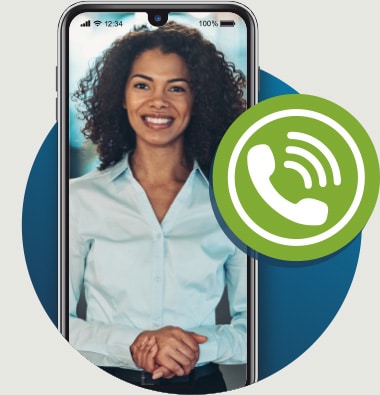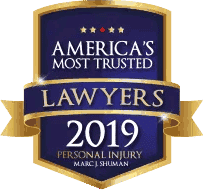Concussion Symptoms: Eyes and Vision Problems Explained
Last updated Monday, November 11th, 2024

Are you experiencing vision problems after a concussion? You’re not alone. Many people suffer from eye-related symptoms like blurred vision, double vision, and light sensitivity. Understanding these ‘concussion symptoms eyes’ is crucial for proper diagnosis and treatment. This article will explain common visual issues, their causes, and what steps to take for recovery.
Key Takeaways
- Approximately 69% to 82% of individuals who suffer a concussion experience visual problems, including blurred vision, double vision, and light sensitivity.
- Early identification and treatment of concussion-related vision issues are crucial for effective recovery and can significantly improve a patient’s quality of life.
- Specialized interventions, such as vision therapy and the use of prism glasses, play an essential role in managing visual symptoms and aiding rehabilitation after a concussion.
Get Our Team, Working In Your Favor
Top Concussion Symptoms: Eyes and Vision Problems Explained
Visual symptoms are among the most common and disruptive effects of a mild traumatic brain injury (TBI). Studies reveal that between 69% and 82% of individuals who have suffered a concussion report vision problems such as double vision, blurred vision, and light sensitivity. These issues arise because concussions can impair the communication between the brain and the eyes, disrupting visual processing and leading to a range of symptoms.
The impact of these vision problems can vary significantly among individuals. Some might experience mild discomfort, while others could face severe difficulties in their daily lives. Not everyone with a concussion will experience the same set of symptoms or the same severity. Understanding the full spectrum of possible visual issues and their potential effects is essential given this variability.
Addressing these concussion-related vision problems is crucial for effective recovery. Persistent visual symptoms can lead to frustration, decreased quality of life, and even prolonged post-concussion syndrome. Exploring the common symptoms and their underlying causes highlights the importance of timely diagnosis and treatment.
Introduction
Visual disorders are alarmingly common after a concussion, affecting approximately 69% of individuals. The variety and severity of these symptoms can differ greatly, especially in the acute phase immediately following the injury. Understanding these vision-related symptoms is crucial for proper treatment and recovery.
Interventions taken promptly can significantly improve recovery outcomes. Early identification of vision problems can lead to more effective treatments, aiding individuals in regaining their visual functions and resuming daily activities.
This guide sheds light on the impact of concussions on visual health and offers practical advice for those affected.
Common Vision Symptoms Post-Concussion
Many individuals with concussions experience visual symptoms that are frequently overlooked and inadequately treated. Common vision problems post-concussion include blurry vision, double vision, and light sensitivity. These symptoms often stem from disruptions in the communication pathways between the brain and the eyes, rather than direct injuries to the eyes themselves.
The duration of these vision-related symptoms can vary widely; some may be temporary, while others can persist for a long time, between 69% and 82% of those who suffer a concussion report experiencing vision problems. Recognizing and understanding these common symptoms is the first step toward addressing them effectively.
Blurred Vision
Blurred vision is a prevalent symptom following a concussion, affecting how individuals perceive their surroundings. Reading can become a challenge as words appear blurry, and the eyes may tire quickly due to the strain. This condition, known as accommodative insufficiency, affects up to 50% of individuals with a concussion, making it difficult to focus quickly and easily.
Prolonged screen time and exposure to fluorescent lighting can further exacerbate these vision problems. Managing these environmental factors is crucial for reducing symptoms and aiding recovery.
Double Vision
Double vision, or diplopia, is another common visual symptom post-concussion. This condition can result from trauma affecting the eye muscles or the optic nerve, leading to misalignment and double images. Such eye muscle injuries disrupt the normal coordination needed for single, clear vision.
Living with double vision poses significant challenges. Everyday tasks like reading, driving, and even walking can become daunting. Specialized interventions are often required to realign the eyes and improve visual processing.
Light Sensitivity
Light sensitivity, or photophobia, is a common issue for individuals recovering from a concussion. This sensitivity can be triggered by displacement or injury to sensitive brain structures, leading to discomfort, nausea, and headaches.
Lens filters are often used to manage light sensitivity and alleviate eye strain. These filters can provide significant relief, allowing individuals to function more comfortably in bright environments.
Suffered a Traumatic Brain Injury?

Visual Motion Sensitivity After Head Injury
Visual motion sensitivity is characterized by disorientation and discomfort in busy environments, often due to central nervous system dysfunction. This condition is linked to a mismatch in sensory processing between the visual, vestibular, and proprioceptive systems.
Individuals with visual motion sensitivity may feel dizzy or nauseous when exposed to visual stimuli like flickering screens or scrolling text. Reducing exposure to visually stimulating environments and addressing sensory conflicts can improve overall comfort for those with visual motion sensitivity.
Eye Pain and Discomfort
Eye pain and discomfort are common post-concussion symptoms that can manifest as:
- stabbing pain
- dull aches
- redness
- burning
- itchiness
Accommodation spasms, muscle inflammation, or exposure to light can cause these symptoms.
Convergence insufficiency, where the eyes struggle to focus on nearby objects, can also lead to significant eye strain and discomfort. Targeted interventions are often required to alleviate muscle contractions and improve visual comfort.
Changes in Eye Movements
Delayed or slow eye movements resulting from concussions can affect the ability to track moving objects. Issues in both saccadic and smooth pursuit movements are common, leading to difficulties in tasks like reading and following moving targets.
Significant changes in eye movements can impact daily activities, making prompt recognition and intervention crucial. Specialized therapies can help improve eye movement coordination and overall visual function.
Difficulty Tracking Moving Objects
Precise coordination between the eyes is required to track moving objects, which a concussion can disrupt. Individuals may struggle with visually following a moving target, leading to disorientation and frustration. This difficulty can hinder activities such as driving, playing sports, and even watching TV.
Exercises and therapies designed to improve eye tracking and coordination can address these challenges.
Saccadic Eye Movements
Saccades, rapid eye movements that shift focus from one target to another, can be affected by concussions. Concussions can cause saccadic dysfunctions, making these quick movements less accurate or delayed. Impaired saccadic movements can complicate tasks like reading, where the eyes need to move smoothly between lines of text.
Improving saccadic function through therapy is crucial for restoring visual efficiency and comfort.
Vision Loss and Concussions
Direct eye trauma or severe traumatic brain injury can result in vision loss after a concussion. Symptoms may include blind spots or reduced vision in parts of the visual field.
Neurological causes, such as trauma to the optic nerve or brain dysfunction affecting the visual pathway, can also lead to vision loss. The complexity of these issues necessitates specialized care from neuro-optometrists for effective treatment.
Diagnosing Vision Problems Post-Concussion
A thorough review of medical history and a physical exam focused on visual and vestibular functions are necessary to diagnose vision problems following a concussion. This comprehensive assessment includes examining visual acuity, ocular alignment, and eye movement functions like smooth pursuit and saccades.
Regular eye exams may not reveal underlying visual dysfunctions related to concussions. Therefore, consultation with neuro-optometrists, who specialize in these issues, is crucial for accurate diagnosis and effective treatment.
Treatment Options for Concussion-Related Vision Issues
Awareness and specialized care are essential for effective treatment and rehabilitation of vision problems following a concussion. Multidisciplinary approaches, including vision therapy and neuro-integrative therapy, can significantly aid recovery. These treatments focus on strengthening visual skills, retraining eye muscles, and assisting brain regions in processing visual information.
Comprehensive care is crucial for overcoming challenges posed by concussion-related vision problems.
Vision Therapy
Supervised exercises in vision therapy are designed to improve visual skills and eye-brain coordination. Neuro-optometrists tailor these interventions to address specific visual challenges related to concussions. Techniques such as the Brock String test and Dynavision exercises help retrain the eyes to work properly, enhancing daily activities and quality of life.
Use of Prism Glasses and Lens Filters
Prism glasses and lens filters are valuable tools in managing vision issues caused by concussions. Prism glasses help align vision and provide comfort for those experiencing visual misalignment. Lens filters can mitigate light sensitivity, offering significant relief for post-concussion patients.
These aids significantly improve visual comfort and functionality.
Tips for Managing Vision Symptoms at Home
Managing vision symptoms at home involves addressing environmental factors and self-care strategies. Limiting screen time, reducing exposure to fluorescent lighting, and wearing sunglasses can help reduce discomfort. Rest and gradual increase in physical activity are also important for recovery.
Tools like magnifying glasses can assist with viewing objects more clearly, easing daily tasks.
When to Seek Medical Attention
Recognizing when to seek medical attention is crucial. Urgent symptoms include one pupil larger than the other, worsening headache, repeated vomiting, and loss of consciousness.
Persistent visual symptoms beyond the typical recovery period also warrant professional evaluation if symptoms persist.
Frequently Asked Questions
What are the most common vision symptoms after a concussion?
After a concussion, common vision symptoms include blurred vision, double vision, and light sensitivity due to disruptions in brain-eye communication pathways. It’s important to monitor these symptoms for proper recovery.
How can light sensitivity be managed post-concussion?
To effectively manage light sensitivity post-concussion, consider using lens filters, wearing sunglasses, and minimizing exposure to bright lights and screens. These strategies can significantly alleviate discomfort and aid in recovery.
Why is it important to see a neuro-optometrist for concussion-related vision problems?
It is crucial to see a neuro-optometrist for concussion-related vision problems because they specialize in addressing vision issues tied to neurological conditions, leading to more accurate diagnoses and effective treatment plans.
What role does vision therapy play in concussion recovery?
Vision therapy plays a crucial role in concussion recovery by enhancing visual skills and eye-brain coordination, which can be affected after a concussion. This targeted approach helps restore normal visual functions and supports overall recovery.
When should someone seek medical attention for vision problems after a concussion?
Seek immediate medical attention for vision problems after a concussion if you experience unequal pupil size, worsening headaches, repeated vomiting, or loss of consciousness. Persistent visual symptoms should also be evaluated by a professional.




















